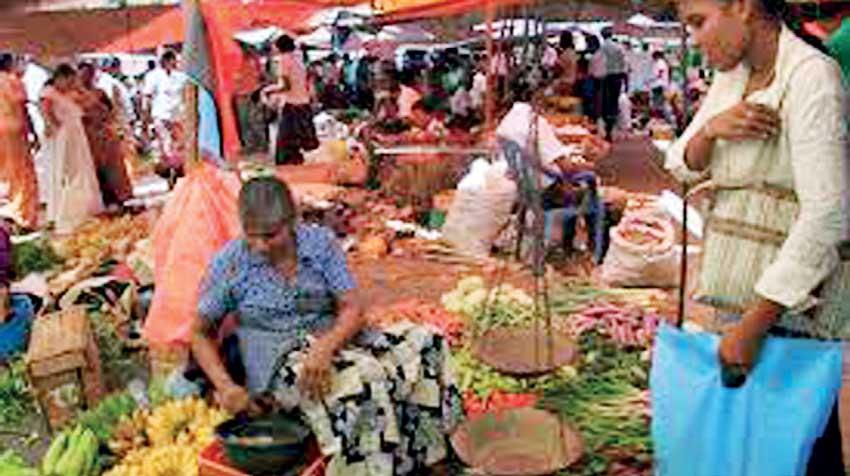22 Oct 2021 - {{hitsCtrl.values.hits}}

Sri Lanka’s national level consumer prices continued to increase in September, at similar levels in August, although the prices eased from a year earlier period, predominantly on some decline seen in food prices.
However, there was a spectre of non-food inflation building during September, even before the increases in prices of fuel, gas and cement went into effect and before the country was fully reopened after six weeks of soft lockdowns on October 1, spooking both the consumers and authorities, who are scrambling to bring the soaring prices under control.
According to the National Consumer Price Index (NCPI), the prices rose by 0.3 percent in September from a month ago, rising at the same level in August, although the prices eased to 6.2 percent from a year ago levels, from a 6.7 percent increase seen up to August 2021.
While keeping rates steady, the Central Bank last week cautioned that its main consumer price gauge, the Colombo Consumer Price Index, could overstep its 6.0 percent upper band in the near term, when the full effects of the lifting of price controls begin to hit the consumer wallets but ruled out double-digit inflation.
Sri Lanka’s Colombo inflation rose by 0.4 percent in September, accelerating from 0.3 percent in August but inflation measured annually eased to 5.7 percent, from 6.0 percent in August, largely mirroring the national level price behaviour.
Sri Lanka’s food prices nationally decelerated on a month-over-month (MoM) and year-over-year (YoY) levels in September but the trend could be short-lived as sharp price increases went into effect in October. Despite easing in September, still the food prices in Sri Lanka are rising at double-digit levels.
According to the NCPI, Sri Lanka’s food prices decelerated to 0.1 percent in September 2021, from a 0.6 percent increase in August but such prices surged 10.0 percent from a year ago, albeit decelerating from 11.1 percent in August.
The prices of rice, vegetables, sugar, coconut oil, coconut and red onions declined while the prices of Mysore dhal, big onions, fresh fish, chicken, drive fish, bread, buns, wheat flour and other non-categorised food items rose, offsetting the declines.
Meanwhile, the non-food prices were seen accelerating to 0.4 percent in September, making a big swing from 0.1 percent in August, even before people started meaningfully venturing out for outdoor functions and other recreational activities, as the price increases reflected the rising prices of L.P. gas, routine household maintenance and healthcare spending.
Annual prices rose by 3.0 percent in September, at the same level seen in August.
With the lifting of lockdowns effective from October 1 and the gradual removal of any remaining restrictions in the ensuing weeks, non-food inflation could further return with much intensity as such would entail increased travelling, patronising restaurants for dine outs, clothing and education-related expenditure as people return to workplaces while schools restarted after nearly seven months long closure, due to COVID resurgence in April.
Sri Lanka’s consumer prices are rising in tandem with the rest of the world, due to the soaring global commodities prices, weaker rupee against the dollar and the pandemic-triggered supply chain bottlenecks.
In a latest such development, Lanka Indian Oil Company PLC raised its petrol and diesel prices by Rs.5.0 a litre from October 21 midnight, in response to the soaring global oil prices, the second such increase since early June this year.
24 Nov 2024 2 hours ago
24 Nov 2024 3 hours ago
24 Nov 2024 4 hours ago
24 Nov 2024 8 hours ago
24 Nov 2024 9 hours ago